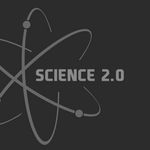Optics

Galileo merged the fields of cosmology and astronomy, thanks to his telescope, which gave scientists a more accurate way to observe and define the heavens. His telescope helped shift authority in the observation of nature from men to instruments. From backyard astronomers to the Hubble Telescope to the Vatican Observatory, Galileo’s impact on astronomy is both formative and lasting.
In the first article of this trio, you saw some of the objects and instruments from the Galileo exhibit, along with setting the scene of his life. The second article continued in that vein. This last article will…

Galileo's contributions to science in general, and optics and astronomy in particular, were so monumental that over 350 years later we still discuss them in introductory physics courses.
A recent exhibit at the Franklin Institute in Philadelphia "showcased Galileo's accomplishments, his relationship to the ruling Medici family, his discoveries, and his overall impact on astronomy, physics, and math." Some of the objects and instruments from the exhibit, along with setting the scene of Galileo's life, were presented in the first article of this series. This, the second article, will continue…
Galileo Galilei wasn't just an Italian physicist, mathematician, astronomer, philosopher and heresy suspect (not to mention father of modern observational astronomy, modern physics, science, and modern science, that last one he was named by both Hawking and Einstein). He was also a friend of the Medici, the political Italian dynasty whose patronage of scientists and artists led to the Renaissance.1
Arguably, Galileo's biggest contribution to astronomy was the development of a 30x telescope, through which he made many of his subsequent observations and discoveries (most notably the phases of…

A real life Alice In Wonderland story is a little closer to reality now that researchers in China have created the first tunable electromagnetic gateway.
In a new paper, researchers from the Hong Kong University of Science and Technology and Fudan University in Shanghai have described the concept of a "a gateway that can block electromagnetic waves but that allows the passage of other entities" like a "'hidden portal' as mentioned in fictions."
The gateway uses transformation optics and an amplified scattering effect from an arrangement of ferrite materials called single-crystal yttrium…

Superman's X-ray vision may be closer than you think. The tubes that power X-ray machines are shrinking and also improving in clarity.
A team of nanomaterial scientists, medical physicists, and cancer biologists at the University of North Carolina has developed new lower-cost X-ray tubes packed with sharp-tipped carbon nanotubes for cancer research and treatment. This tiny technology was presented at this year's meeting of the American Association of Physicists in Medicine in Anaheim, California.
The science goal is to image human breast tissue, laboratory animals, and cancer…

Albert Einstein's theory of general relativity, which describes how the gravity of a massive object like a star can curve space and time, has been successfully used to predict the bending of starlight by the sun, small shifts in the orbit of the planet Mercury and the phenomenon known as gravitational lensing.
Xiang Zhang, faculty scientist with Lawrence Berkeley National Laboratory (Berkeley Lab) and professor at Berkeley, led a study in which it was determined that the interactions of light and matter with spacetime, as predicted by Einstein's general relativity, can be studied using a new…

There's a bipolar force with a repulsive side that doesn't involve cosmic opera or wooden acting - it's light. And it can be used to control components on silicon microchips, meaning future nanodevices could be controlled by light rather than electricity, according to Yale researchers.
The team previously discovered an 'attractive' force of light and showed how it could be manipulated tiny switches in semiconducting micro- and nano-electrical systems. They say they have now uncovered its non-evil twin - a repulsive force.
Researchers have theorized the existence of both the…

A team of physicists and engineers have demonstrated all-fibre quantum logic, where single photons are generated and used to perform the contolled-NOT quantum logic gate in optical fibers with high fidelity.
The only quantum technology in practical use today is quantum cryptography and is currently limited in the distance over which secure communication may occur.
More sophisticated quantum networks will require multiple nodes with the ability to implement small-scale quantum processing in order to increase the range of quantum communications. Such networks will rely on optical fibre links,…

Ounce for ounce, spinach has more nutritional value than iceberg lettuce; in general, darker colors in leafy vegetables mean more antioxidants and therefore more health benefits.
Knowing that, plant physiologists has developed a way to make lettuce darker and redder — and therefore healthier — using ultraviolet light-emitting diodes (LEDs).
The dark red tinges on a leaf of red leaf lettuce are the plant kingdom's equivalent of suntan lotion. When bombarded with ultraviolet rays from the sun, the lettuce leaf creates UV-absorbing polyphenolic compounds in its outer layer of cells. Some of…

Tunable fluidic micro lenses can focus and direct light at will to count cells, evaluate molecules or create on-chip optical tweezers, according to a team of Penn State engineers. They may also provide imaging in medical devices, eliminating the necessity and discomfort of moving the tip of a probe.
Conventional, fixed focal length lenses can focus light at only one distance. The entire lens must move to focus on an object or to change the direction of the light. Attempts at conventional tunable lenses have not been successful for lenses on the chip. Fluidic lenses, however, can change…